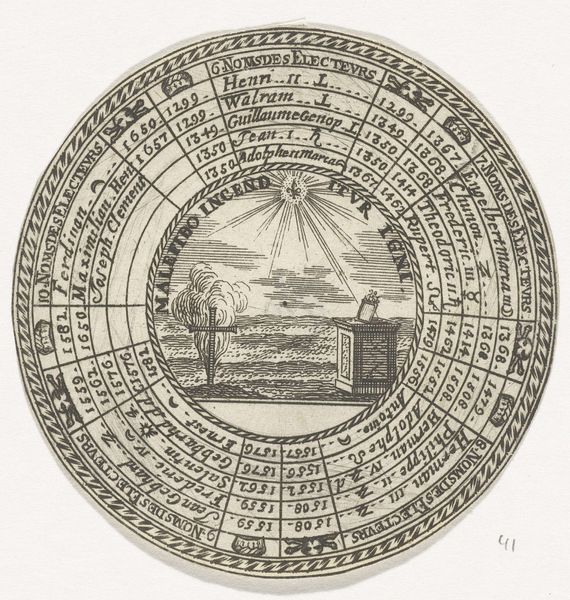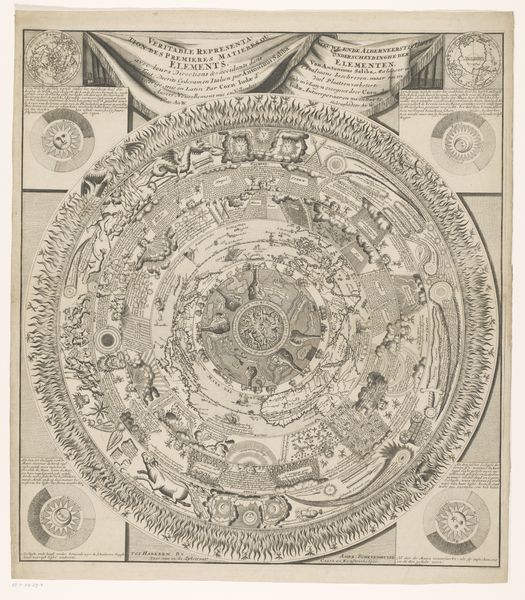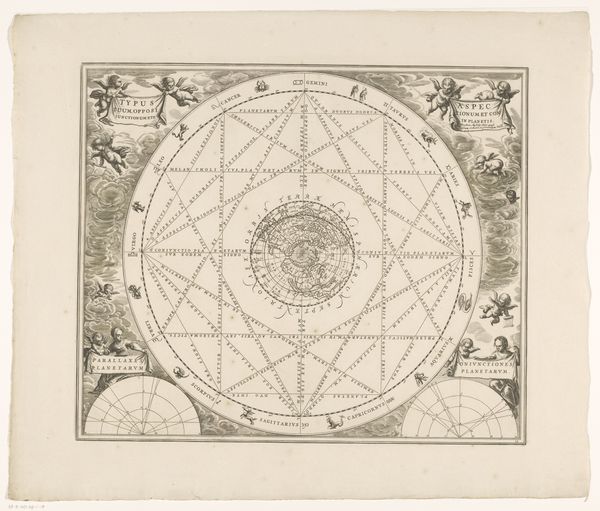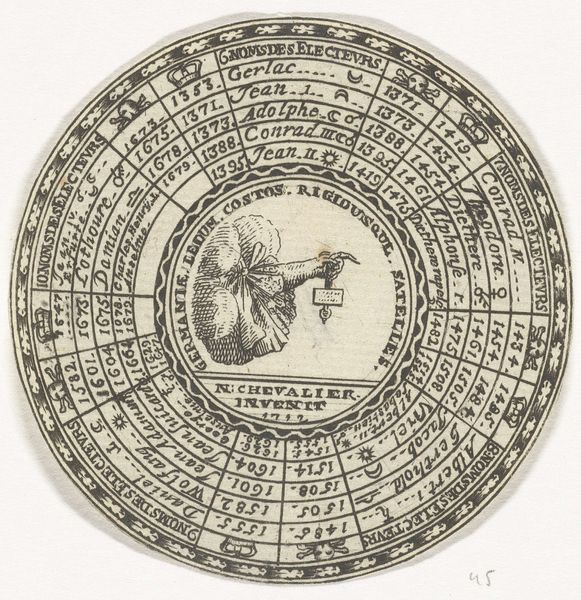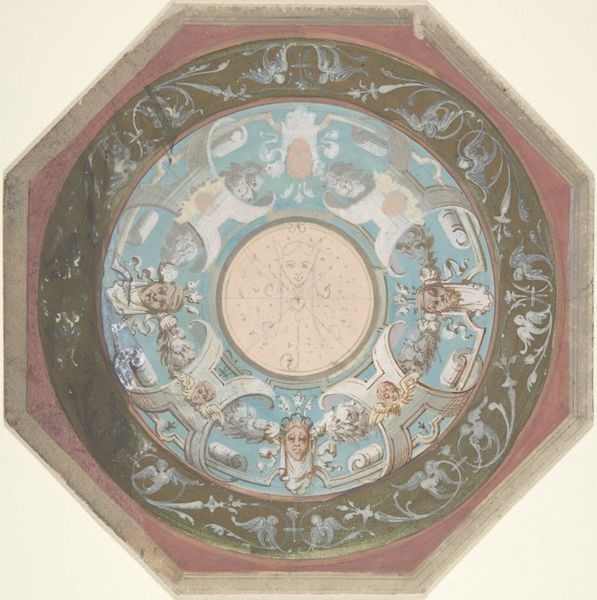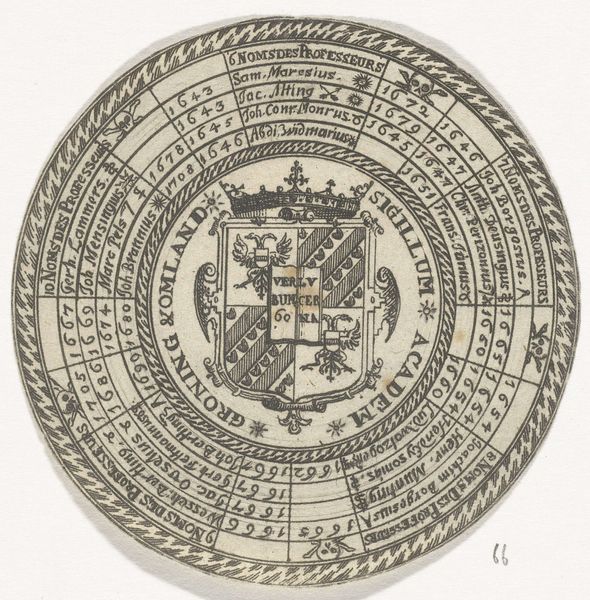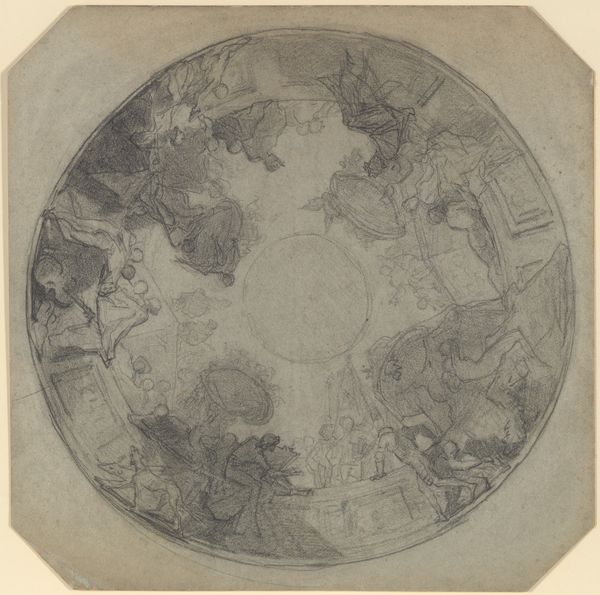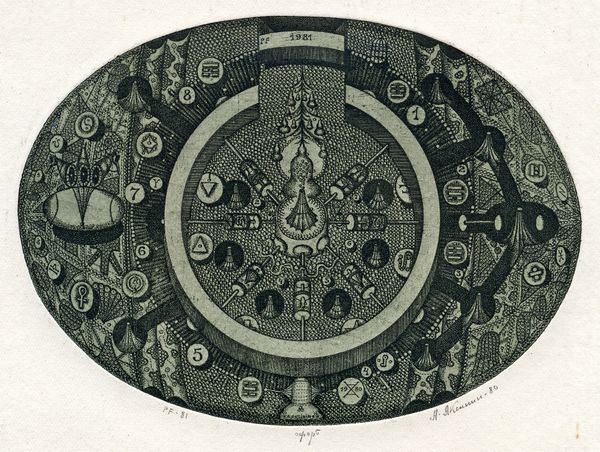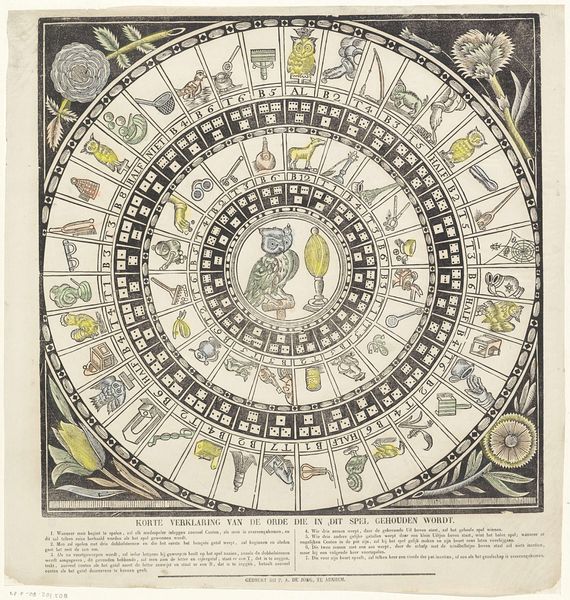
Trompe L'Oeil Ceiling with the Coronation of the Virgin and a Variant for the Decoration 17th century
0:00
0:00
drawing, print, fresco, ink, pencil, pen
#
pencil drawn
#
drawing
#
allegory
# print
#
perspective
#
charcoal drawing
#
fresco
#
11_renaissance
#
ink
#
pencil
#
pen
#
history-painting
#
trompe-l'oeil
#
italian-renaissance
Dimensions: 11 5/8 in. (29.6 cm) (in diameter)
Copyright: Public Domain
Editor: Here we have an intriguing 17th-century drawing, "Trompe L'Oeil Ceiling with the Coronation of the Virgin and a Variant for the Decoration", housed here at the Met. The illusion of depth is remarkable. It's so intricate! How does the artist achieve such a convincing sense of architectural space on a flat surface? Curator: Indeed, the visual organization is paramount here. Observe how the artist employs linear perspective. Notice how all the lines converge toward a single vanishing point. This creates the illusion of recession, drawing the viewer's eye upward. Consider the distribution of light and shadow – the carefully rendered gradations which sculpt the forms and enhance the sense of depth. Editor: So, it's not just about replicating the scene, but really constructing a new visual space? Curator: Precisely! The very essence of trompe-l'oeil lies in this constructed reality. This artifice highlights its departure from naive representationalism. Think about the function of ornament in the circular frames; how does it serve as both structural support and ornamental frieze? Editor: That's fascinating. The drawing, itself, feels like a demonstration of the theory. It has a wonderful meta quality. Curator: And doesn't that speak to a deeper inquiry into how we perceive, into how art itself operates as a conduit between reality and representation? The composition achieves its goal perfectly. What is your feeling? Editor: I now see how a close study of form reveals a new appreciation of technique, as opposed to a simple reproduction of reality. Thanks!
Comments
No comments
Be the first to comment and join the conversation on the ultimate creative platform.
